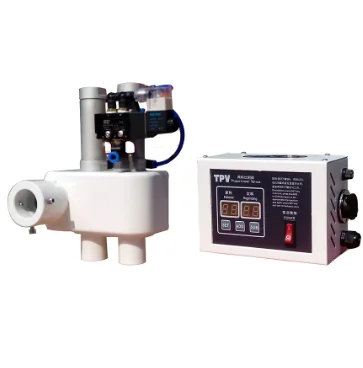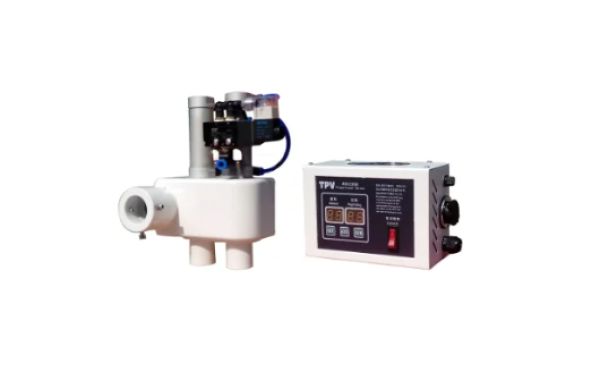Achieving consistent quality in plastic production is a top priority for manufacturers in the industry. Every product that rolls off the assembly line needs to meet strict standards and specifications, ensuring customer satisfaction and brand reputation. But how can this be accomplished? Enter proportional valves – the unsung heroes of plastic manufacturing! These innovative devices play a crucial role in controlling fluid flow, pressure, and temperature during the production process, ultimately contributing to impeccable product quality. In this blog post, we will delve into what proportional valves are, how they work their magic, the benefits they offer to plastic production, different types available on the market today, and tips for selecting the right valve for your specific application. So let's dive in and explore why proportional valves are essential components in achieving consistent quality in plastic production!
What are Proportional Valves?
Proportional valves, also known as control valves or flow control valves, are precision devices designed to regulate the flow rate, pressure, and direction of fluid in various applications. Unlike conventional on/off valves that only allow for full or no flow, proportional valves offer the ability to adjust and fine-tune these parameters with great accuracy.
At their core, proportional valves consist of a valve body with an actuator controlled by an electrical signal. This signal determines the position of the valve's spool or poppet within the body. By modulating this position based on the input signal received from sensors or controllers, proportional valves can precisely control fluid flow rates and pressures.
These intelligent devices find widespread use in plastic production processes where maintaining consistent quality is paramount. They play a crucial role in controlling injection molding machines' hydraulic systems by regulating melt temperature and ensuring precise material dosing during filling and packing stages.
By allowing for accurate adjustment of critical parameters such as pressure and flow rate during plastic processing, proportional valves enable manufacturers to achieve uniform product dimensions while minimizing defects like warpage or sink marks.
In addition to their role in injection molding machines, proportional valves also find application in extrusion processes such as blow molding or film production. In these operations, they help maintain stable melt temperatures throughout continuous production runs.
Proportional valves are indispensable tools that contribute significantly to achieving consistent quality in plastic production. Their ability to finely tune fluid dynamics ensures precise material distribution and optimal process conditions necessary for manufacturing high-quality products consistently.

How do Proportional Valves Work?
Proportional valves play a crucial role in achieving consistent quality in plastic production. These valves are designed to regulate the flow and pressure of fluids, allowing for precise control over various processes. But how exactly do they work?
At their core, proportional valves utilize an electrical current to adjust the position of an internal valve spool or poppet. This movement alters the size of the flow passage, thereby controlling the amount of fluid that passes through. By modulating this flow, proportional valves can achieve accurate pressure regulation and maintain stable conditions throughout the plastic production process.
The key mechanism behind proportional valve operation is feedback control. Sensors are used to measure important parameters such as pressure or temperature, which are then sent to a controller unit. The controller analyzes these data points and sends appropriate signals to adjust the valve's position accordingly.
This continuous feedback loop allows for real-time adjustments based on changing conditions within the system. As a result, operators have greater control over factors like melt temperature and injection speed - both critical factors in ensuring consistent quality products.
In addition to their ability to maintain precision and consistency, proportional valves offer other benefits as well. They allow for faster response times compared to traditional on/off solenoid valves since they can make incremental changes rather than abrupt switches. This results in smoother transitions between different operating states and minimizes potential defects or inconsistencies.
It's clear that proportional valves are essential components when it comes to achieving consistent quality in plastic production processes. Their ability to precisely control fluid flow enables manufacturers to produce high-quality plastics with minimal variations while also improving efficiency .
The Benefits of Using Proportional Valves in Plastic Production
One of the key components in plastic production is the use of proportional valves. These innovative valves play a crucial role in ensuring consistent quality throughout the manufacturing process.
First and foremost, proportional valves allow for precise control over fluid flow and pressure. This level of control is essential when working with plastics, as even minor variations can have significant impacts on the final product. By utilizing these valves, manufacturers can maintain tight tolerances and produce high-quality plastic parts consistently.
Another major benefit of using proportional valves is their ability to improve efficiency and reduce waste. With precise control over flow rates, manufacturers can minimize material usage while still achieving optimal results.
Furthermore, proportional valves offer flexibility in adjusting various parameters such as temperature and viscosity during different stages of plastic production. This adaptability allows manufacturers to fine-tune their processes based on specific requirements or changing conditions, resulting in improved overall productivity.

The Different Types of Proportional Valves
When it comes to plastic production, using the right type of proportional valve is crucial for achieving consistent quality. There are several different types of proportional valves available on the market today, each with its own unique features and advantages.
One popular type of proportional valve is the servo-operated valve. These valves use a combination of electrical signals and hydraulic pressure to control the flow rate and pressure in a precise manner. They offer fast response times and high accuracy, making them ideal for applications that require tight control over the plastic molding process.
Another type of proportional valve commonly used in plastic production is the solenoid-operated valve. These valves work by using an electromagnetic coil to open or close a plunger within the valve body, controlling the flow rate of fluid through the system. Solenoid-operated valves are known for their simplicity and cost-effectiveness, making them suitable for less demanding applications.
Pilot-operated valves are another option worth considering. These valves use a small pilot valve to control a larger main valve, allowing for higher flow rates and greater precision in controlling fluid flow. They are often used in applications where large amounts of fluid need to be controlled accurately.
There are also direct-acting proportional valves which operate without any external energy sources such as electricity or pilot signals. These valves work based on mechanical principles alone, providing reliable operation even in harsh environments.
How to Select the Right Proportional Valve for Your Plastic Production Application
When it comes to selecting the right proportional valve for your plastic production application, there are several factors that need to be considered. First and foremost, you need to assess the specific requirements of your production process. This includes considering factors such as pressure range, flow rate, and temperature.
Another important factor to consider is the type of material being used in your production process. Different materials may require different types of valves with varying specifications.
It is also crucial to take into account the level of precision required in your plastic production. Proportional valves offer a high degree of control over flow rates and pressure, allowing for precise adjustments during the manufacturing process.
Additionally, you should evaluate the compatibility between the proportional valve and other components within your production system. Ensuring that all components work harmoniously together will contribute to achieving consistent quality in plastic production.
Consider seeking guidance from experts or suppliers who specialize in proportional valves for plastic production applications. They can provide valuable insights and recommendations based on their expertise and experience.
By carefully assessing these factors and making an informed decision when selecting a proportional valve for your plastic production application, you can optimize performance and ensure consistent quality throughout your manufacturing process.

Conclusion
Proportional valves play a crucial role in achieving consistent quality in plastic production. These advanced control devices provide precise and accurate flow regulation, ensuring that the desired specifications are met consistently. By controlling the flow rate of fluids or gases within the system, proportional valves help to maintain optimal conditions for molding and extrusion processes.
The benefits of using proportional valves in plastic production are numerous. They enable better process control, leading to improved product quality and reduced scrap rates. Proportional valves also contribute to increased productivity by allowing for faster cycle times and higher throughput. Additionally, these valves offer flexibility and adaptability as they can be easily adjusted based on specific production requirements.
When selecting a proportional valve for your plastic production application, it is important to consider factors such as operating pressure range, flow capacity, response time, accuracy level required, and compatibility with other components in your system. Consulting with an experienced supplier like Sintd Plastic Technologies can help ensure that you choose the right valve for your needs.
Proportional valves are invaluable tools in achieving consistent quality in plastic production processes. Their ability to precisely control fluid or gas flows allows manufacturers to maintain tight tolerances and produce high-quality products consistently. With advancements in technology and ongoing innovation in this field, we can expect even more sophisticated solutions from proportional valve manufacturers going forward.








